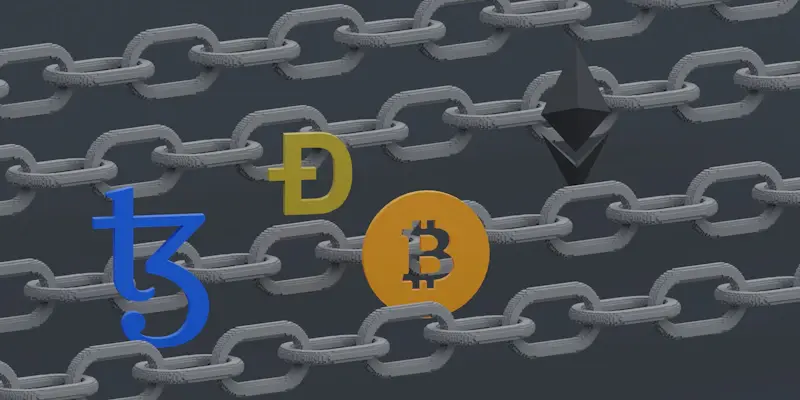Pi Coin, the cryptocurrency developed by the Pi Network, has recently encountered considerable volatility and downward pressure in the market. Following an 8% decline, Pi Coin is now trading at about $1.35, which has nullified its weekly gains and signifies a 20% drop since its recent peak of $1.70. Analysts are currently divided on the future trajectory of Pi Coin, with the altcoin having corrected approximately 10% from its critical support level of $1.50, thus giving an advantage to bearish market participants.
Market Volatility and Its Impact
Downward Price Shifts
A significant contributor to Pi Coin’s current volatility is the impending release of an additional 129 million Pi Coins, valued at $175 million. This influx threatens to add significant selling pressure to an already cautious market landscape. Such a large release of coins into the market could potentially dilute the value of existing holdings and further escalate downward price trends. Investor sentiment has also been impacted negatively by the absence of a long-awaited Binance listing announcement, which many traders and investors had anticipated on March 14, often celebrated as “Pi Day.”
The absence of any confirmation from Binance has led to widespread speculation within the Pi community, creating further uncertainty about the token’s potential listing opportunities in the future. This lack of clarity has played a considerable role in driving the bearish sentiment surrounding Pi Coin. The volatility observed in Pi Coin’s market value underscores the challenges associated with emerging cryptocurrencies and highlights the need for clear communication and strategic planning from development teams to maintain investor confidence.
Impact of Market Sentiment
The market sentiment surrounding Pi Coin is currently cautious, with investors closely monitoring any developments that could influence the token’s value. The anticipation, followed by the disappointment of the Binance listing saga, has left a noticeable impact on overall market confidence. Normally, a major exchange listing like Binance would be expected to bolster investor confidence and drive up the asset’s price due to the increased exposure and accessibility it brings. However, the absence of this critical milestone has resulted in a period of hesitation and uncertainty among Pi Coin investors.
Furthermore, market sentiment can be quite sensitive to the introduction of new coin supplies, as is the case with the impending release of the 129 million Pi Coins. Such significant increases in supply, if not matched by proportionate demand, could lead to drastic price drops. Therefore, for emerging tokens like Pi Coin, maintaining a balanced approach to coin releases and fostering a transparent dialogue with investors is essential to navigating the turbulence of market sentiment and assuring long-term growth.
Future Prospects and Uncertainties
Launch of Pi Domains
Adding to the mixed outlook, the Pi Network has recently launched Pi Domains, which aims to expand the network’s footprint by offering unique digital addresses auctioned through blockchain technology. This initiative has been conceived to revolutionize digital connectivity, much like traditional web domains, by providing unique identities on the Pi Network blockchain. However, the reception has been mixed within the community. Some skeptics question the practical applications and constraints of .pi domains since they currently operate exclusively within the Pi blockchain and cannot be accessed through conventional web browsers.
This limitation raises important concerns about governance, security, and user accessibility. The success of Pi Domains hinges on these issues being adequately addressed, as user adoption will depend significantly on ease of use and overall utility. While proponents of Pi Domains tout its innovative potential, the broader implications for the Pi Network’s adoption and integration into the larger digital ecosystem remain to be seen.
Governance and Security Concerns
The introduction of Pi Domains necessitates a focus on governance and security within the Pi Network. Ensuring the robust and secure functioning of these domains is essential to gain user trust and foster wider acceptance. Blockchain-based domains present distinctive security advantages due to their decentralized nature, but they also introduce specific challenges, such as ensuring a seamless and transparent governance structure. The ability to resolve disputes, manage domain ownership, and prevent malicious activities are critical components that need to be meticulously planned and implemented.
Moreover, for Pi Domains to gain traction, user accessibility must be straightforward and hassle-free. Initiatives that focus on integrating .pi domains with traditional internet access points or creating accessible gateways will be vital for enhancing user experience. Success in these areas could potentially establish Pi Domains as a valuable asset within the Pi Network ecosystem and beyond.
Concluding Thoughts
Pi Coin, the cryptocurrency launched by the Pi Network, has recently faced significant market instability and downward trends. After experiencing an 8% drop, Pi Coin is now trading around $1.35. This has erased its weekly gains and marks a 20% decline from its recent high of $1.70. Market analysts are currently divided on Pi Coin’s future trajectory. The altcoin has corrected about 10% from its key support level of $1.50, which has provided an edge to bearish market participants.
In addition, despite some investors remaining optimistic about its long-term potential, Pi Coin’s recent performance has stirred uncertainty. The continuous fluctuation suggests that the coin’s market sentiment is highly volatile. As it navigates these turbulent waters, the coin’s future remains uncertain, and stakeholders are keenly watching for signs of stabilization or further downturns. The mixed opinions among analysts highlight the need for caution as investors weigh their options for Pi Coin amid ongoing market pressures.

